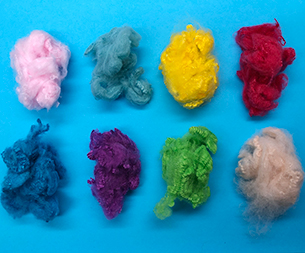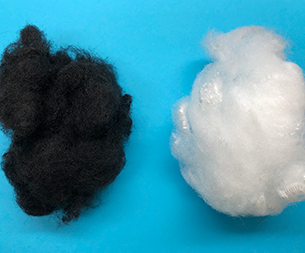The world's largest free trade zone was born
On November 15, 2020, the "Regional Comprehensive Economic Partnership Agreement" (RCEP) was officially signed. The 15 member states include the ten ASEAN countries, China, Japan, South Korea, Australia and New Zealand, covering a total population of 2.27 billion and a gross domestic product. A total of 26.2 trillion US dollars and a total export value of 5.2 trillion US dollars, both account for about 30% of the world. After 8 years of negotiation and consultation, the member states of RCEP have jointly promoted the world's largest free trade area from conception to reality. This is not only a landmark and important milestone for East Asia regional cooperation, but also an important engine for global economic growth.
After the signing of RCEP, each member country still needs to complete their own domestic approval procedures. The agreement will take effect 60 days after at least six ASEAN member states and three non-ASEAN member states signatories submit relevant documents. As the world’s largest free trade arrangement, after RCEP takes effect, the number of final zero-tariff products in trade in goods will exceed 90%. The overall openness of service trade and investment is significantly higher than the original "10+1" free trade agreement, and high-level Modernization topics such as intellectual property, e-commerce, competition policy, and government procurement. As far as my country’s textile industry is concerned, RCEP will have a far-reaching positive impact on the industry’s expansion of the scale of foreign trade and the deepening of industrial chain supply chain cooperation within the region.
China and RCEP member states
Close textile and garment trade
China has been in close contact with 14 other RCEP member countries in the textile and apparel trade. In terms of exports, ASEAN and Japan are our industry’s third and fourth largest export markets after the European Union and the United States. The total exports accounted for more than 20% of my country’s total annual exports of textiles and clothing (the total exports to the two major markets are approximately 60 billion U.S. dollars); South Korea and Australia, as important global textile and apparel consumer markets, have relatively sufficient purchasing power and are also important destinations for the industry's end product exports. In terms of imports, my country's annual imports of textiles and apparel from ASEAN exceed US$7 billion, accounting for about 30% of the industry's annual imports. ASEAN has become the largest source of my country's imported textiles and apparel. For example, my country imports a large amount of cotton yarn and clothing from Vietnam, and imports cotton knitted clothing from Cambodia. At the same time, Japan and South Korea are also important import sources for my country's functional fabrics, chemical fiber textiles and garments, and textile dyes. In addition, Australia and New Zealand also provide my country with a large amount of high-quality wool and other textile materials.
According to China Customs statistics, in 2019, my country’s total textile and apparel import and export trade with other RCEP member states reached US$88.26 billion, accounting for approximately 28.8% of the industry’s total foreign trade that year. Among them, my country exported 76.19 billion US dollars of textiles and clothing to the aforementioned countries, accounting for 27.1% of our industry’s global exports. At the same time, my country imported 12.07 billion US dollars of textiles and clothing from these countries, accounting for 47.4% of the industry's total annual imports.
China and Japan established a free trade partnership for the first time
Achieve a historic breakthrough
Speeding up the implementation of the free trade zone strategy is an important part of my country's new round of opening up. Up to now, my country has signed 19 free trade agreements with 26 countries and regions, including most RCEP member states. Among them, the China-New Zealand Free Trade Agreement took effect in October 2008, the China-ASEAN Free Trade Area was fully established in January 2010, and the China-South Korea and China-Australia Free Trade Agreements both took effect in December 2015. Through the signing of RCEP this time, my country and Japan have established a new free trade partnership. This is the first time that my country has signed a free trade agreement with the world's top ten economies, and it is also a major historic breakthrough for my country in implementing the free trade zone strategy.
The scale of Sino-Japanese textile trade is expected to continue to expand
Japan is currently the fourth largest export market in our industry. In 2019, my country exported 20.88 billion US dollars of textiles and clothing to Japan, accounting for approximately 7.4% of the industry’s total annual exports; during the same period, China imported 3.25 billion US dollars of textiles and clothing from Japan, accounting for approximately 12.8% of total global imports (the above data is based on the statistics of China Customs ). After the RCEP takes effect, most of the products that the industry originally exported to Japan generally face about 4%-11% of Japanese import tariffs. Except for a small part (masks, bedding filled with textile materials, etc.), the main exports are to Japan. The tariffs on clothing products (such as knitted sweaters, men’s and women’s tops, pants, suits, T-shirts, socks, dresses, etc.) will be reduced to zero within 16 years.
Since Japan has signed free trade agreements with ASEAN, Vietnam, Thailand, Indonesia, India and other countries, the textile and apparel products of these countries can enjoy duty-free treatment to Japan. After the implementation of RCEP takes effect, it will help our industry gradually participate in international competition fairly in the Japanese market, reduce the export costs of foreign trade companies, and enhance the international competitive advantage of products.
At the same time, the original import tax rate of 5% to 8% for the main categories of products imported by our industry from Japan will basically be reduced to zero in 11, 16 or 21 years. For example, the original 8% tax rate of textile machinery products such as shuttleless air-jet looms and flat weft knitting machines imported from Japan will be reduced to zero within 11 or 16 years after the RCEP takes effect, which will help the industry accelerate industrial innovation and upgrading And improve production efficiency.
China-Korea Textile and Apparel Trade
The tariff is optimal under the RCEP rules
South Korea is an important trading partner of China's textile industry in East Asia, and one of the important export markets of my country's textile and apparel. In 2019, my country's textile and apparel exports to South Korea were 8.99 billion U.S. dollars, accounting for about 3.2% of the total industry exports that year. In the same year, my country imported US$1.502 billion in textiles and apparel from South Korea, accounting for 5.9% of the industry’s total annual imports. As far as South Korea is concerned, my country is also its largest source of textile and apparel imports, accounting for more than 1/3 of South Korea's total annual textile and apparel imports.
The China-Korea Bilateral Free Trade Agreement came into effect on December 20, 2015. Various concession rules have been implemented for 5 years, and most textile and apparel products have enjoyed tariff reduction or exemption. The signing of the RCEP has little impact on the existing textile and apparel trade tariffs of the two countries, but there are still some export products with the best tariffs under the RCEP rules. From the list of clothing products with different tax rates under the various agreements listed in the table below, it can be seen that after the implementation of RCEP, my country’s chemical fiber knitted sweaters, men’s and women’s down jackets, women’s jeans, men’s cotton shirts and other products will all be based on the tax rate. The tax rate is halved to 6.5%. After the RCEP takes effect in the future, it will help expand exports of these products to South Korea.
RCEP helps deepen the area
Textile and apparel industry chain and supply chain cooperation
The signing of RCEP is a boost to the international cooperation of the textile industry under the current situation where anti-globalization trends are emerging and the epidemic has hit the global textile industry chain cooperation. The member states of RCEP not only include the most important textile and apparel production bases in the world (China, ASEAN, Japan, South Korea), but also cover many important textile and apparel consumer markets in the world, and actively participate in regional industrial cooperation and construction. The efficient and coordinated textile and garment industry chain in the region adds assistance. After the RCEP takes effect, especially in terms of increasing exports to Japan, it will promote trade and investment interaction between our industry in the Lancang-Mekong countries and establish a more interconnected production capacity cooperation system, which will help accelerate the formation of a new development that promotes the mutual promotion of domestic and international double cycles. pattern.
Through RECP, the market access of goods, services, investment and other fields among member states will be further relaxed, and customs procedures and technical standards will be gradually unified. By adopting regional rules of origin, it will promote the free flow of economic factors in the region and strengthen the membership. Cooperation in the division of labor will stimulate the expansion and upgrading of the consumer market in the region, and promote the further development of the industrial chain, supply chain and value chain in the region.
RCEP’s cumulative rules of origin are more beneficial to companies
The biggest achievement in the field of RCEP trade in goods is the provision of rules for the accumulation of origin in the region. Under the rules of origin in most bilateral free trade agreements in the world, goods entering another free trade partner country B from country A need to meet the value-added standards or production requirements in country A, and the goods are identified as originating from country A to enjoy the benefits of country B. tariff. The RCEP regional accumulation rule means that when goods enter from country A to another free trade partner country B, intermediate products of multiple contracting parties in the agreement can be used to meet the required value-added standards or production requirements, so that country A enjoys B The threshold of national zero tariff can be significantly reduced. A large-scale regional origin accumulation system like RCEP will make it easier for companies to obtain preferential tariffs. At the same time, it will have an impact on the company's procurement of raw materials and parts, industrial chain layout, and foreign investment decisions. After the RCEP takes effect in the future, when importing and exporting products that are included in the tariff reduction schedule and meet the standards of origin, they should actively apply for and issuance of certificates of origin, so as to enjoy tariff preferences and customs clearance convenience in time, and enhance the competitiveness of products in the international market .
Part of the data and information source: Ministry of Commerce
Source of information: China Textile International Production Capacity Cooperation Enterprise Alliance
- Polypropylene staple fiber is wi
- How to better exert the power of
- The characteristics of all aspec
- Internet technology changes cons
- Polypropylene staple fiber proce
- The traditional peak season has
- The performance advantages of Hy
- Operation analysis of China's in
- What factors are Polypropylene s
- From January to August this year
- Markets
- Automotive Products
- Nonwoven Lining
- Geosynthetics
- Liquid Filtration
- Apparel and Textiles
- Hygiene Products
- Building and Construction
- Other Markets
- Contact Us
- Contact Haibang





